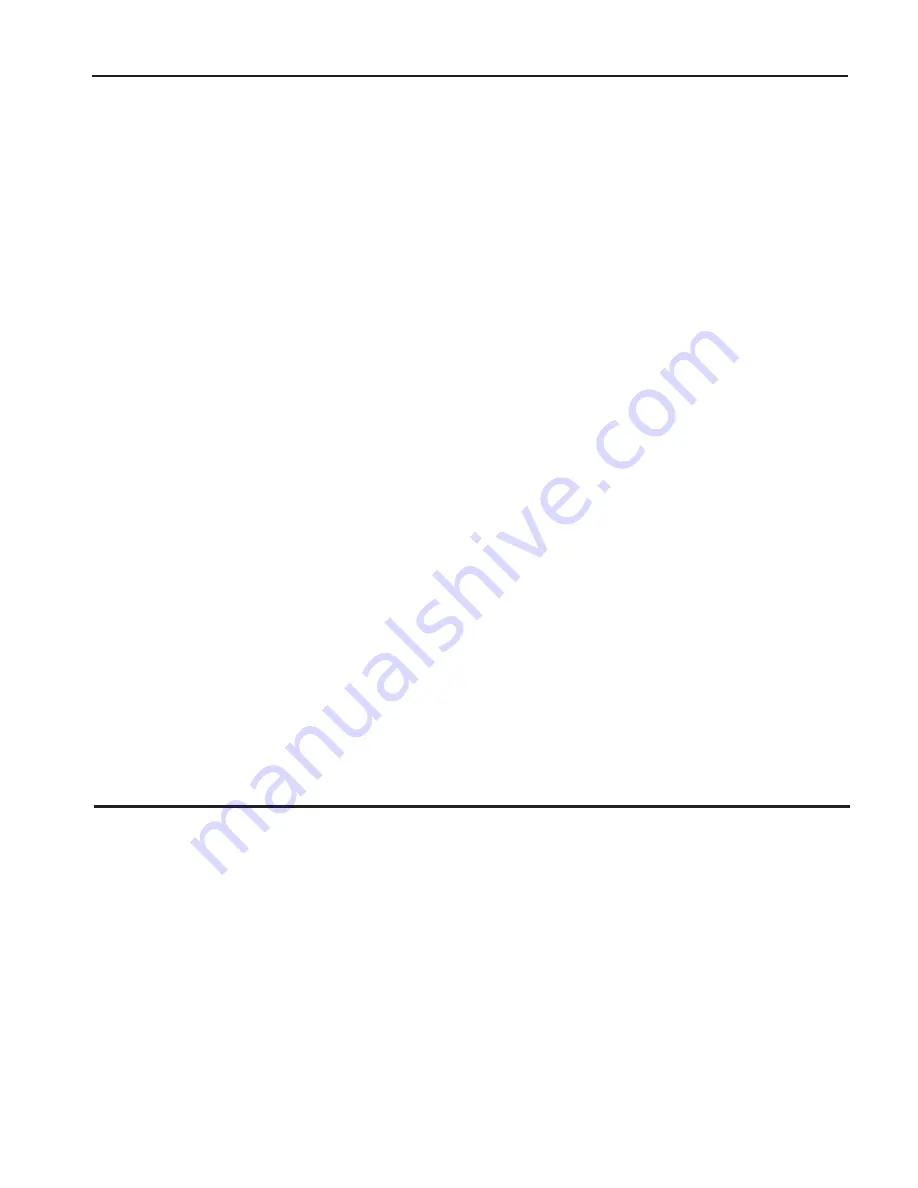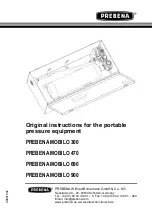
7 - ENG
D22073
DESCRIPTION OF OPERATION
Extension Cords
Use extra air hose instead of an extension cord to avoid
voltage drop and power loss to the motor.
If an extension cord must be used, be sure it is:
•
a 3-wire extension cord that has a 3-blade ground-
ing plug, and a 3-slot receptacle that will accept
the plug on the compressor.
•
in good condition.
•
no longer than 50 feet.
•
14 gauge (AWG) or larger. (Wire size increases as
gauge number decreases.) 12 AWG, 10 AWG and
8 AWG may also be used. DO NOT USE 16 OR 18
AWG.
Location of the Air Compressor
Your compressor comes to you completely assembled
and ready for use. Operate the air compressor in a dry,
clean, cool and well ventilated area. The air compressor
pump and case are designed to allow for proper cooling.
Clean or blow off dust or dirt that collects on the air
compressor. A clean air compressor runs cooler and
provides longer service. The ventilation openings on your
air compressor are necessary to maintain proper operat-
ing temperature. Do not place rags or other containers on
or near these openings.
Voltage and Circuit Protection
See front cover.
INSTALLATION AND BREAK-IN PROCEDURES
Air Compressor Pump:
To compress air, the piston
moves up and down in the cylinder. On the downstroke,
air is drawn in through the intake valves. The exhaust
valves remain closed. On the upstroke of the piston, air
is compressed. The intake valves close and compressed
air is forced out through the exhaust valves, through the
outlet tube, through the check valve and into the air tank.
Working air is not available until the compressor has
raised the tank pressure above that required at the air
outlet.
Check Valve:
When the air compressor is operating, the
check valve is “open”, allowing compressed air to enter
the air tank. When the air compressor reaches “cut-out”
pressure, the check valve “closes”, allowing air pressure
to remain inside the air tank.
Pressure Switch:
The pressure switch automatically
starts the motor when the tank pressure drops below the
factory set “cut-in” pressure. It stops the motor when the
air tank pressure reaches the factory set “cut-out” pres-
sure.
Regulator:
The air pressure coming from the air tank is
controlled by the regulator. Turn the regulator knob
clockwise to increase pressure and counterclockwise to
decrease pressure. To avoid minor readjustment after
making a change in pressure setting, always approach
the desired pressure from a lower pressure. When
reducing from a higher to a lower setting, first reduce to
pressure less than that desired, then bring it up to the
desired pressure. Depending on the air requirements of
each particular accessory, the outlet regulated air pres-
sure may have to be adjusted while operating the acces-
sory.
Outlet Pressure Gauge:
The outlet pressure gauge
indicates the air pressure available at the outlet side of the
regulator. This pressure is controlled by the regulator and
is always less or equal to the tank pressure. See “Oper-
ating Procedures”.
Tank Pressure Gauge:
The tank pressure gauge indi-
cates the reserve air pressure in the tank.
Cooling System:
This compressor contains an ad-
vanced design cooling system. At the heart of this cooling
system is an engineered fan. It is perfectly normal for this
fan to blow air through the vent holes in large amounts. You
know that the cooling system is working when air is being
expelled.
Air Intake Filter:
This unit requires no air filter due to the
unique design of the air intake system.
Drain Valve:
The drain valve is located at the base of the
air tank and is used to drain condensation at the end of
each use.
Pressure Release Valve:
The pressure release valve
located on the side of the pressure switch, is designed to
automatically release compressed air from the compres-
sor head and the outlet tube when the air compressor
reaches “cut-out” pressure or is shut off. If the air is not
released, the motor will try to start, but will be unable to.
The pressure release valve allows the motor to restart
freely. When the motor stops running, air will be heard
escaping from this valve for a few seconds. No air should
be heard leaking when the motor is running, or continuous
leaking after unit reaches cut-out pressure.






























